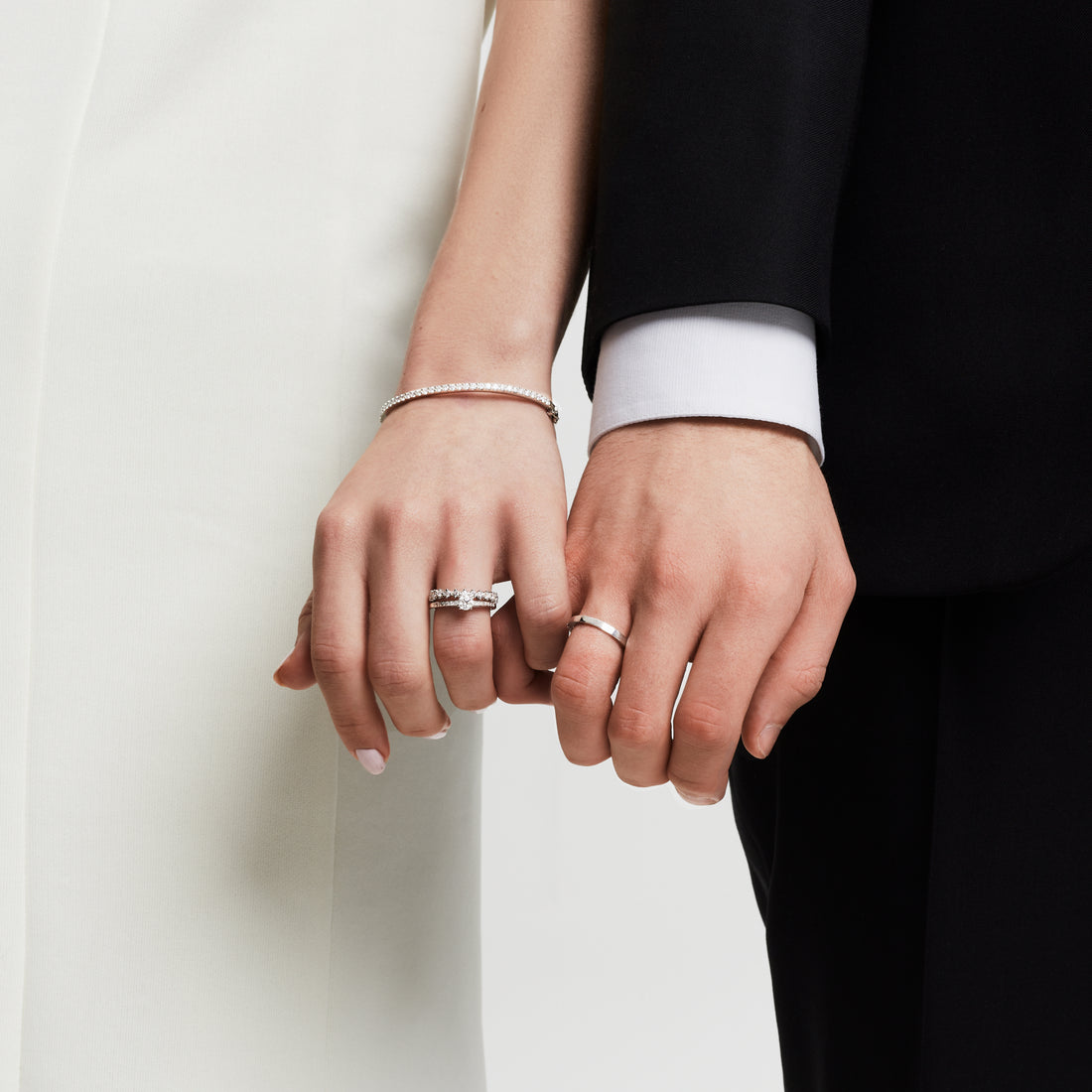On Which Hand Should You Wear an Engagement Ring and Wedding Ring?

Welcome to Philippe Harold, your trusted jeweler in Antwerp's Diamond District since 1937. We specialize in engagement rings and all other exquisite pieces of jewellery. Here’s our guide on which hand to wear your engagement and wedding rings, blending tradition with personal preference.
Understanding Ring-Wearing Traditions
Left-Hand Tradition
In countries like France, the Netherlands, the USA, the UK, Australia, and many English-speaking nations, engagement and wedding rings are traditionally worn on the left hand. This custom traces back to ancient Greece, where it was believed the "vena amoris" or "vein of love" linked the left ring finger directly to the heart.
Right Hand Tradition
In Belgium (some areas), Russia, Poland, and some Eastern European countries, couples wear their rings on the right hand. This practice originated from Roman times when the left hand was considered untrustworthy.
Both Hands Tradition
In Brazil, Germany, and Spain, rings are worn on both hands. Traditionally, couples wear their rings on one hand during the engagement and move them to the other hand during the wedding. Brazilians start with the right hand and switch to the left, while Germans and Spanish do the opposite.
Religious Influences on Ring Wearing
Judaism
Jewish traditions, over 3,500 years old, sometimes involve the groom placing the ring on the bride's right index finger during the ceremony. She later moves it to her ring finger and gives the groom his ring privately.
Roman Catholicism
Historically, Roman Catholics wore rings on their right hands. Today, this varies globally, aligning with local customs.
Protestantism
Protestants, who separated from the Catholic Church in 1517, moved their rings to the left hand. Modern Protestants typically follow the local traditions of their region.
Hinduism
In India, where 80% of the population practices Hinduism, traditional marriage symbols include the "sindoor" or red dot on the forehead rather than rings. However, rings are becoming more popular.
Islam
Islamic traditions regarding rings vary. Generally, men wear rings on the right hand, and women on the left. However, these practices are cultural rather than religious requirements, with personal preference playing a significant role.
Personal Preference
Today, personal preference often outweighs tradition or religious customs. Couples can choose to wear their rings on the left or right hand based on comfort, practicality, and style.
At Philippe Harold, we honor both tradition and personalization. Whether you are following cultural norms or setting your own, our legacy and expertise ensure your rings are perfect for you. Visit us in Antwerp’s Diamond District for personalized guidance and exquisite craftsmanship.
